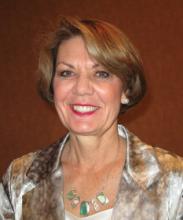LAS VEGAS – The demand for diabetes educators is projected to increase by at least 60% by 2025, according to a study presented at the annual meeting of the American Association of Diabetes Educators.
"We have a diabetes epidemic. We need to increase the number of diabetes educators, and we also need to be flexible in our roles," AADE President Donna Tomky, NP, CDE, said in an interview at the meeting.
"We also have to keep collecting and tracking our outcomes to be ready for pay for performance. We already have clear evidence that [diabetes education] improves metabolic outcomes, lowers hospitalization rates, and reduces cost," said Ms. Tomky of ABQ Health Partners, Albuquerque, N.M.
The study, conducted by Dobson DaVanzo & Associates LLC for the association, comprised several sources, including a literature review, a systematic search of employment Web sites to examine job postings for diabetes educators, a claims analysis using Medicare claims from the years 2006-2009, and the development of a quantitative workforce model of the supply and demand for educators through the year 2025 under several scenarios.
The research modeled the current provision of diabetes education and estimated current demand to be for 43,000 diabetes educators. By 2025, on the basis of the incidence of diabetes in the population, demand was estimated to reach 54,000, assuming no changes in how care is currently delivered. This assumes insurance availability, delivery system structure, benefit structure, allocation of diabetes educators across different care settings, distribution of full-time/part-time diabetes educators, and the fact that diabetes education is reimbursable for people with diagnosed diabetes, not those with prediabetes.
For the supply of diabetes educators to be commensurate with the estimated level of demand (about 1.5% growth per year), the number of diabetes educators would have to increase by 4% per year between now and 2025, Ms. Tomky reported.
The survey also indicated that the range of work settings for diabetes educators will broaden to include not only the traditional hospital outpatient and physician office positions but also nontraditional settings, such as industry sales positions, retail clinics, management consulting, medical weight management and other specialty clinics, community health centers, home health and long-term care facilities, and workplace wellness programs.
The research was funded entirely by AADE as one of the organization’s research initiatives. "We felt this was very important to understand so we can move forward as an organization," she said in the interview.
"We have to understand what the workforce looks like now, what we will need in the future, and how to fill that void. I think the role of the diabetes educator is changing, with more supervisory roles in management and lower level roles that do the education. The AADE will develop a strategic plan out of this, to best assess how to meet these demands, and provide the tools and the training."
Ms. Tomky is on the speaker’s bureau for Novo-Nordisk and is an advisory board member for Can-AM Care.


